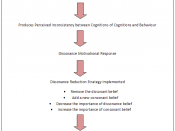INTRODUCTION
In the late 1970s, English second language teaching shifted towards a greater emphasis on listening comprehension with the introduction of the Total Physical Response approach (Brown, 2001). Research began to reveal the importance of listening skills in academic and job related performance and the maintenance of various social relationships (Van Duzer, 1997). The listening process involves numerous factors that include such things as the personality and learning style of the learner and the grammaticality of the message. Listeners are also required to use both their linguistic knowledge and knowledge of the world in order to comprehend successfully.
Studies have also shown that second language teachers who have an understanding of the listening process can assist learners in developing effective strategies for listening comprehension. This paper will describe the steps involved in aural comprehension; address the factors affecting listening comprehension and then outline the factors that should be taken into consideration when planning listening activities.
EIGHT PROCESSES INVOVLED
IN LISTENING COMPREHENSION
There are several cognitive processes that can occur both simultaneously and in rapid succession of each other during listening comprehension (Van Duzer, 1997: 2). The listener is most likely not conscious of these processes. First, the listener is exposed to raw speech which triggers an image in the listener's short term memory. The image is made up of phrases, clauses, cohesive markers, stress, intonation, etc. which are referred to as constituents (Buck, 2001: 27-8). Then, the hearer will determine the type of speech act or event that s/he has encountered such as a TV commercial, college lecture, and so on. After that, the listener attempts to determine the objectives of the speaker. For example, the listener will ascertain if the speaker is threatening, promising or requesting. This is normally referred to as the illocutionary meaning or function of the...


